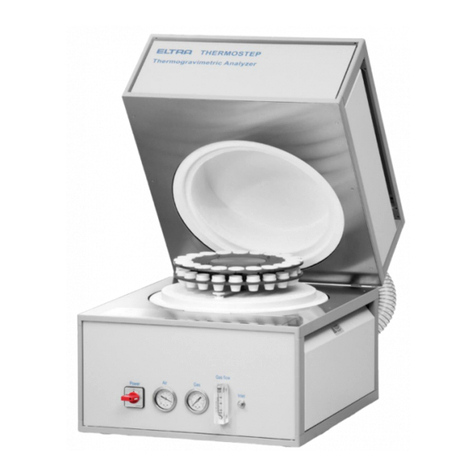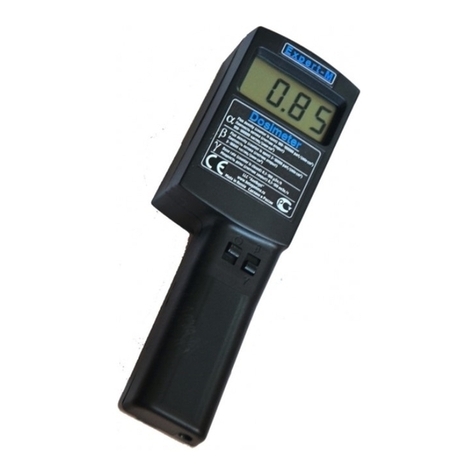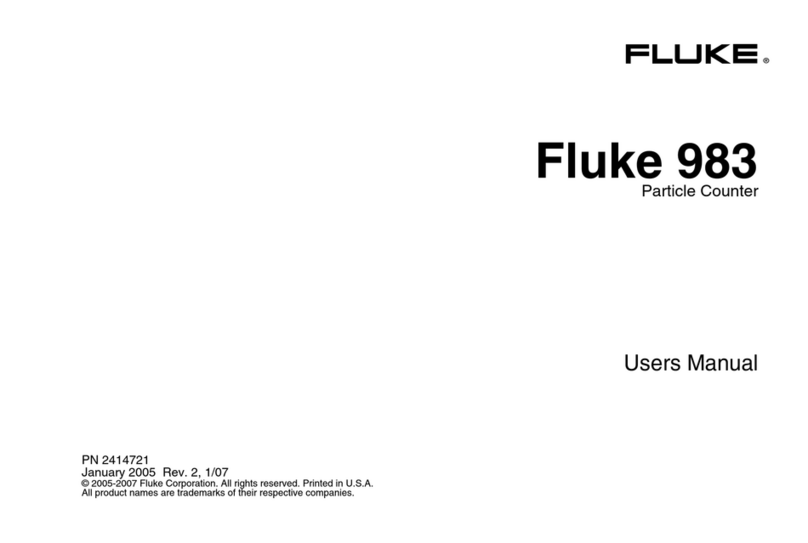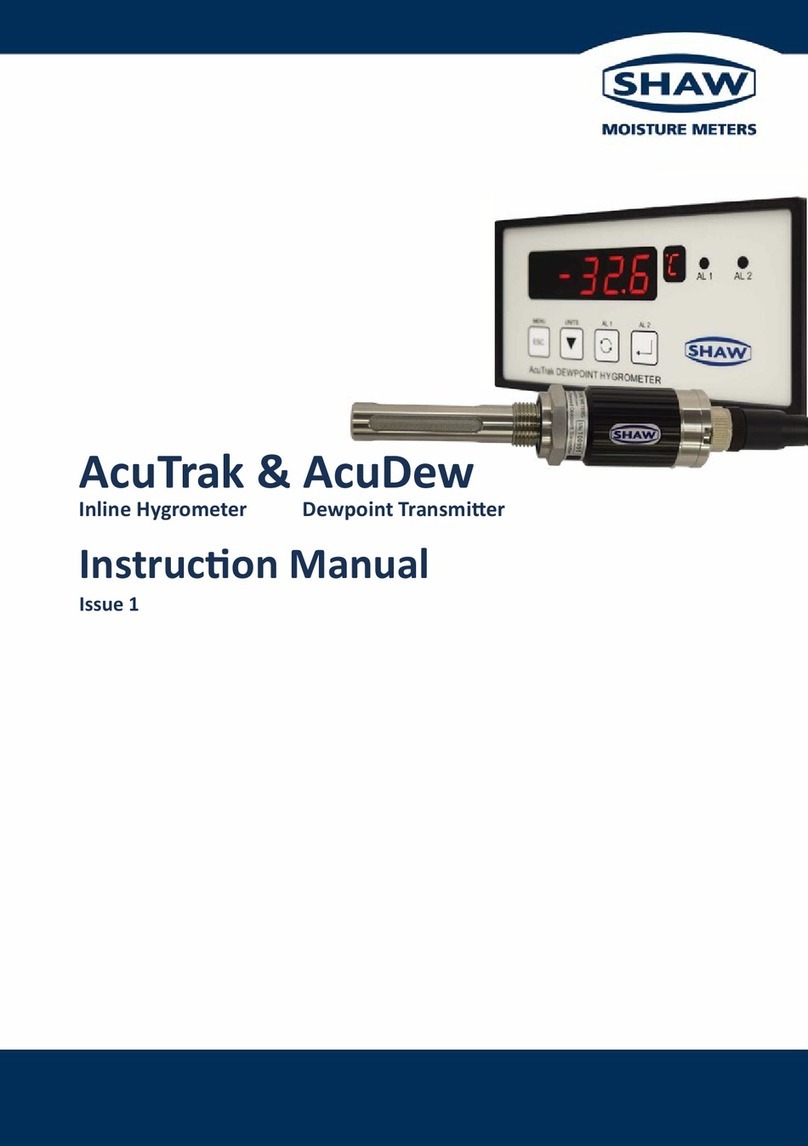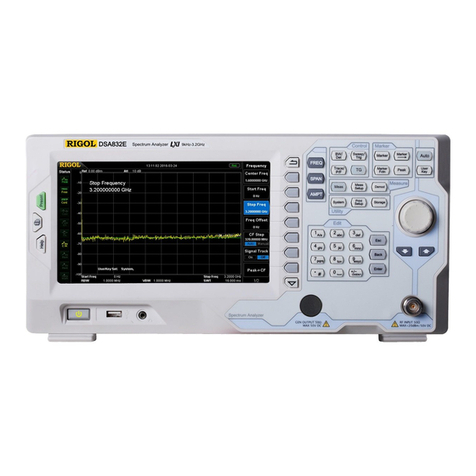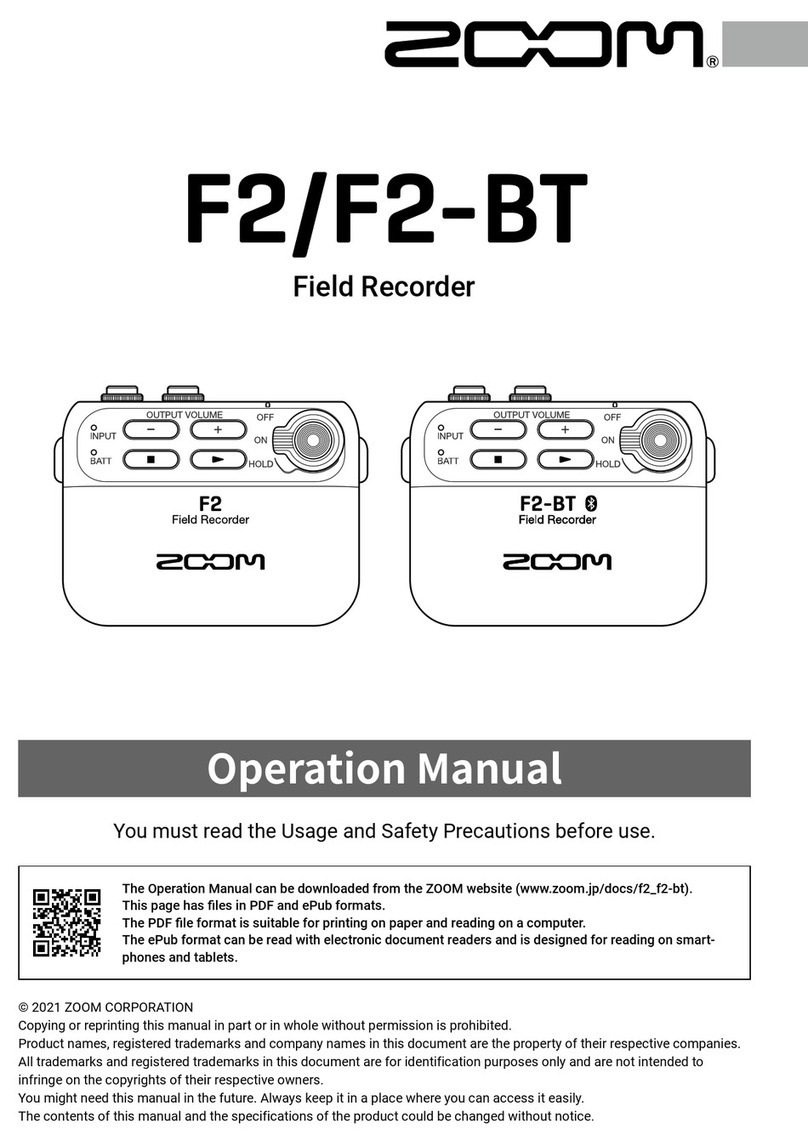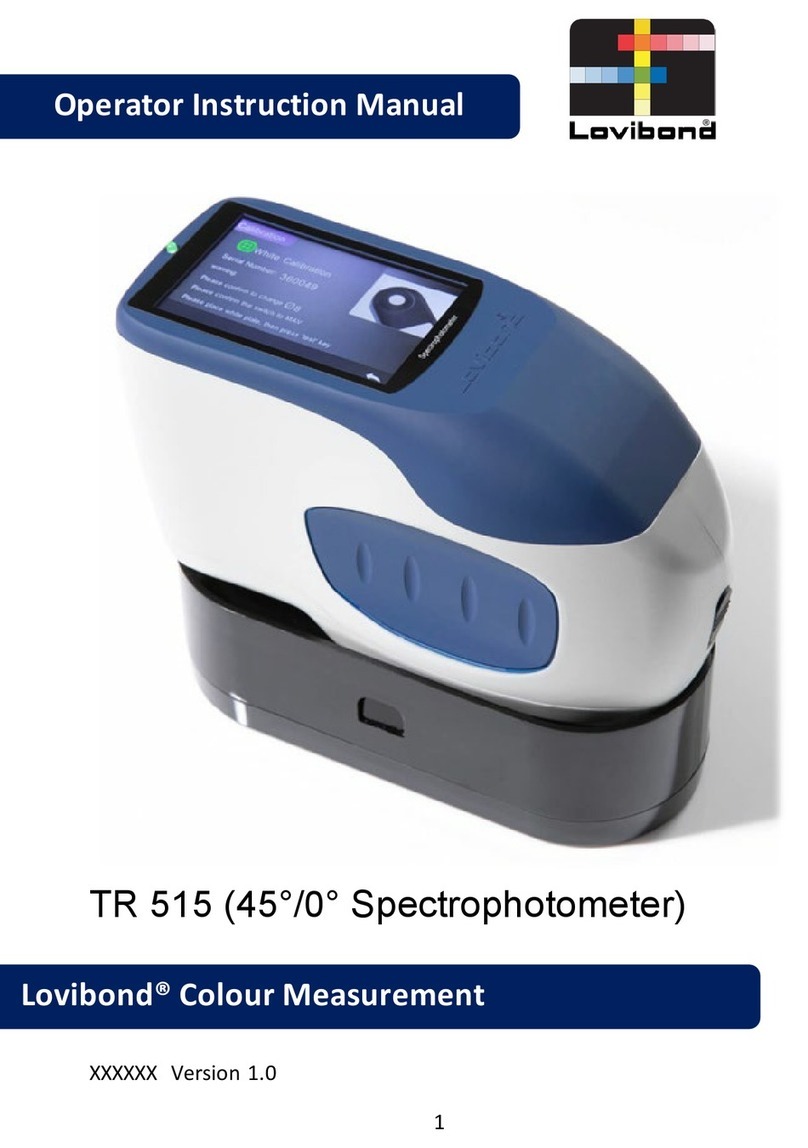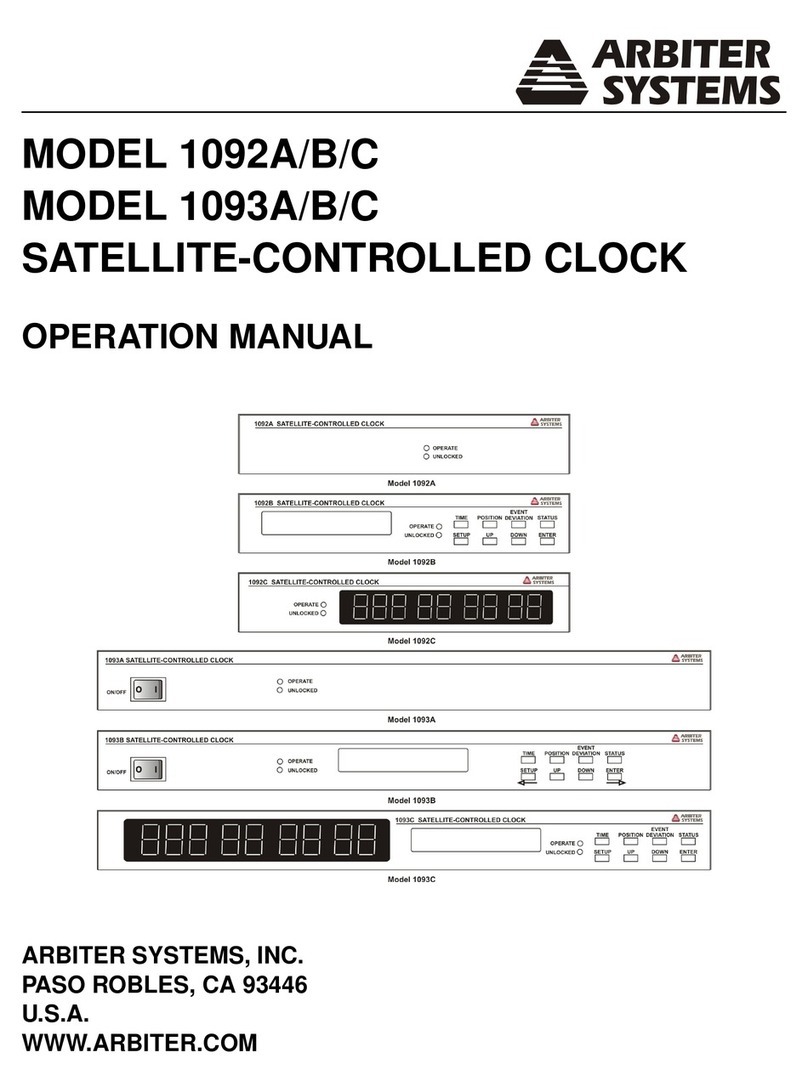ELTRA CS-i User manual

© Eltra GmbH, Retsch-Allee 1-5, 42781 Haan, Germany | 13.07.2020 Version 0003
Operating Manual
Autoloader CS-i/CS-d
Translation

2
Copyright
© Copyright by
Eltra GmbH
Retsch-Allee 1-5
42781 Haan
Germany

3
Table of contents
1Information about the Manual.............................................................................................................. 5
1.1 Explanation of signs and symbols ..................................................................................................... 5
1.2 Disclaimer.......................................................................................................................................... 5
1.3 Copyright............................................................................................................................................ 5
2Safety...................................................................................................................................................... 6
2.1 Explanation of the safety ................................................................................................................... 7
2.2 General safety instructions................................................................................................................ 8
2.3 Repairs............................................................................................................................................... 9
2.4 Intended use...................................................................................................................................... 9
2.5 Improper use...................................................................................................................................... 9
2.6 Safety circuit of the .......................................................................................................................... 10
2.7 Safety symbols on the Autoloader................................................................................................... 11
2.8 Emergency stop............................................................................................................................... 12
2.9 Residual risks .................................................................................................................................. 13
3Description........................................................................................................................................... 17
3.1 Operating side ................................................................................................................................. 17
3.2 Back................................................................................................................................................. 19
3.3 Gripper arm...................................................................................................................................... 20
4Transport and packaging ................................................................................................................... 23
4.1 Transport.......................................................................................................................................... 24
4.2 Temperature fluctuations and.......................................................................................................... 24
4.3 Packaging........................................................................................................................................ 24
5Installation............................................................................................................................................ 25
5.1 Setting up......................................................................................................................................... 25
5.2 Removing the front cover................................................................................................................. 27
5.3 Removing the side cover ................................................................................................................. 28
5.4 Replacing the side wall of the analyzer ........................................................................................... 29
5.5 Installing the furnace sensor............................................................................................................ 30
5.6 Attaching the Autoloader to the analyzer......................................................................................... 31
5.7 Establishing the compressed air supply .......................................................................................... 32
5.8 Establishing communication with the analyzer................................................................................ 32
5.9 Activating manual operating mode .................................................................................................. 33
5.10 Aligning the Autoloader.................................................................................................................... 34
5.11 Assembling the front cover.............................................................................................................. 37
5.12 Assembling the side cover............................................................................................................... 38
5.13 Establishing the power supply......................................................................................................... 38
6Commissioning.................................................................................................................................... 39
7Operation of the Autoloader............................................................................................................... 40
7.1 Loading the crucible tray.................................................................................................................. 42
7.2 Operating the Autoloader................................................................................................................. 43
7.3 Emptying the crucible bin................................................................................................................. 44
8Technical data...................................................................................................................................... 46
8.1 Type plate........................................................................................................................................ 47
9Fault signals on the Autoloader......................................................................................................... 48
10 Cleaning ............................................................................................................................................... 49
11 Servicing .............................................................................................................................................. 50
11.1 Starting non-stop operation ............................................................................................................. 51
12 Decommissioning................................................................................................................................ 52
13 Storage ................................................................................................................................................. 52
14 Disposal................................................................................................................................................ 53

Information about the Manual
4

Information about the Manual
5
1 Information about the Manual
This Manual provides technical guidelines on the safe operation of the Autoloader. Read the
Manual through carefully prior to installing, commissioning, and operating the Autoloader.
Reading and understanding this Manual is a requirement for the safe and correct use of the
Autoloader.
This Manual does not contain any repair instructions. Please contact your supplier or Eltra
GmbH directly in the event of any queries or questions concerning this Manual or the
Autoloader, or in the case of any faults or necessary repairs.
Further information about your Autoloader can be found at http://www.eltra.com/de on the
pages relating specifically to the machine.
Revision status
Document revision 0002 of the "Autoloader CS-i/CS-d" Manual has been prepared in
accordance with the Machinery Directive 2006/42/EC.
1.1 Explanation of signs and symbols
The following signs and symbols are used in this Manual:
Sign
Meaning
Additional or further information is
shown here.
Further or additional information.
1. First instruction.
2. Next instruction.
Result.
Numbered paragraphs contain a series of
instructions. An instruction can end with a result.
Tab 1: Signs and symbols used
1.2 Disclaimer
This Manual has been produced with the greatest care. We reserve the right to make technical
modifications. We shall accept no liability for any personal injuries resulting from the failure to
comply with the safety information and warnings in this Manual. We shall accept no liability for
damage to property resulting from the failure to comply with the instructions in this Manual.
1.3 Copyright
This Manual or parts of it may not be duplicated, distributed, edited or copied in any form
without the prior written consent of Eltra GmbH. Damage claims will be asserted in the event of
infringement.
Unless explicitly stated, the illustrations apply to both variants of the autoloader CS-i/CS-d.

Safety
6
2 Safety
Safety officer
The operating company itself must ensure that persons authorised to work on the Autoloader
comply with the following points:
−they have noted and understood all regulations regarding the area of safety;
−they are aware before they start work of all instructions and regulations relating to their
target group;
−they have easy access to the Manual for this Autoloader at all times;
−they have been familiarised with the safe and correct handling of the Autoloader before
starting work on it, either by means of a verbal introduction by a competent person
and/or with the help of this Manual.
Incorrect operation may lead to personal injuries. The operating company itself is
responsible for its safety and that of its staff. The operating company itself must ensure that no
unauthorised personnel have access to the Autoloader.
Target group
This covers everybody who operates, cleans or works on the Autoloader.
This Autoloader is a modern, efficient, state-of-the-art product developed by Eltra GmbH.
Reliability is guaranteed when the Autoloader is used correctly and when this Manual is
complied with.
Persons under the influence of intoxicating substances (medications, drugs, alcohol) or who
are overtired are not allowed to operate the Autoloader or work on the Autoloader.

Safety
7
2.1 Explanation of the safety
The following warnings in this Manual alert to potential hazards and damage:
DANGER
D1.0000
Risk of fatal injuries
Source of the danger
•Possible consequences of failure to heed the danger.
•Instructions and advice on how to avoid the risk.
Fatal or serious injuries may ensue if the “Danger” warnings “ are not complied with. There is
a very high risk of a life-threatening accident or lasting personal injury. The signal word
DANGER is also used in the running text or instructions.
WARNING
W1.0000
Risk of life-threatening or serious injuries
Source of the danger
•Possible consequences of failure to heed the risk.
•Instructions and advice on how to avoid the risk.
Life-threatening or serious injuries may ensue if the “Warning“ signs are not complied with.
There is an increased risk of a serious accident or potentially fatal injury. The signal word
WARNING is also used in the running text or instructions.
CAUTION
C1.0000
Risk of injuries
Source of the danger
•Possible consequences of failure to heed the risk.
•Instructions and advice on how to avoid the risk.
Moderate or minor injuries may ensue if the “Caution” warnings are not complied with. There
is a moderate or slight risk of an accident or personal injury. The signal word CAUTION is
also used in the running text or instructions.

Safety
8
NOTICE
N1.0000
Nature of the damage to equipment
Source of the damage to equipment
•Possible consequences of failure to comply with the warnings.
•Instructions and advice on how to avoid the damage to equipment.
Damage to equipment may ensue if the notice is not complied with. The signal word NOTICE
is also used in the running text or instructions.
2.2 General safety instructions
CAUTION
C2.0002
Risk of injury
Unfamiliarity with the Manual
•The Manual contains all safety-related information. Failure to comply
with the Manual can therefore lead to injuries.
•Read the Manual carefully before using the machine.
CAUTION
C3.0015
Risk of injury
Improper modifications to the Autoloader
−Improper modifications to the Autoloader can lead to injuries.
•Do not make any unauthorised changes to the Autoloader.
•Only use spare parts and accessories that have been approved by
Eltra GmbH.!
NOTICE
N2.0012
Changes to the Autoloader
Improper modification
−As a result of improper modification, the conformity with European
directives as specified by Eltra GmbH will no longer be valid. All warranty
claims will be invalidated.
•Do not make any modifications to the Autoloader.
•Only use spare parts and accessories that have been approved by
Eltra GmbH.

Safety
9
2.3 Repairs
This Manual does not contain any repair instructions. For reasons of safety, repairs may only
be carried out by Eltra GmbH, by an authorised agency, or by qualified service technicians.
Please notify the following in the event of a repair …
…the agent representing Eltra GmbH in your country;
…your supplier; or
….Eltra GmbH directly.
Service address:
Eltra GmbH
Retsch-Allee 1-5
42781 Haan
Deutschland
2.4 Intended use
The Autoloader CS-i/CS-d is used for the automatic supply of 36 or 130 crucibles to the CS-i
and CS-d analyzers from Eltra GmbH. Use is only permitted in the laboratory by appropriately
qualified and briefed personnel.
2.5 Improper use
Use in the private domain and the use of gases other than those set out in the “Intended use”
chapter is prohibited.
Repairs and modifications may only be carried out by Eltra GmbH, by an authorised agency, or
by qualified service technicians. Unsupervised operation.

Safety
10
2.6 Safety circuit of the
The safety circuit ensures that the Autoloader can only be commissioned under certain
conditions.
The safety circuit checks the following conditions:
•Pneumatic pressure is present
•Furnace cover has been installed and closed
•Crucible bin is present
If one of these conditions is not met, the power supply to the main board and to the valves of
the Autoloader will be interrupted. The gripper fingers remain closed. Crucibles are furthermore
held for at least 5 minutes in the event of a fault. The following diagram shows the safety circuit
procedure:
Fig. 1: Flow diagram of the safety circuit
Pneumatic pressure ok?
Top/bottom cover
assembled?
Autoloader switched on?
Furnace cover
closed?
Crucible bin in place and
not full?
Relay:
Power supply to the main board is
established.
Power supply to the pneumatic
valves is established.
Gripper fingers:
Controlled by the software.
Relay:
Power supply to the main board is
interrupted.
Power supply to the pneumatic
valves is interrupted.
Gripper fingers:
Closed by the safety circuit.
Yes
Yes
Yes
Yes
Yes
No
No
No
No
No

Safety
11
2.7 Safety symbols on the Autoloader
The following safety symbols can be found on the Autoloader CS-i/CS-d:
Fig. 2: Safety symbols on the Autoloader CS-i/CS-d
Position
Component
Description
1
The warning sign at the top of the
Autoloader warns about the risk of
crushing to fingers and hands.
Unless explicitly stated, the illustrations apply to both variants of the autoloader CS-i/CS-d.
1

Safety
12
2.8 Emergency stop
An emergency stop is initiated using the main switch on the operating side of the Autoloader
CS-i/CS-d:
Fig. 3: Main switch on the Autoloader CS-i/CS-d
Position
Component
Description
1
Main switch
Main switch on the operating side of the Autoloader.
Turn the Autoloader off as follows:
1. Turn the Autoloader off by the main switch (1).
The Autoloader has been turned off.
1

Safety
13
2.9 Residual risks
DANGER
D2.0000
Risk to life caused by an electric shock
Exposed power contacts
•Contact with exposed power contacts can cause life-threatening injuries
or death.
•Turn the main switch to Position 0 and pull out the power plug
prior to maintenance work on the analyzer.
•Turn the main switch to Position 1 prior to maintenance work on
the HTFr resistance furnace and allow the machine to cool down
sufficiently. Only set the main switch to Position 0 and pull out the
power plug once you have allowed sufficient time for the machine
to cool down.
WARNING
W2.0003
Risk to life caused by an electric shock
Using water to clean live parts
•Using water to clean the Autoloader can lead to life-threatening injuries
caused by an electric shock if the Autoloader has not been
disconnected from the power supply.
•Only clean the Autoloader with water when the Autoloader has
been disconnected from the power supply.
CAUTION
C4.0000
Risk of burns
Hot crucibles
−The crucibles are hot when the Autoloader transports the crucibles from
the analyzers into the crucible bin. The hot crucibles can ignite the
surrounding area and cause burns.
•Do not reach into the moving Autoloader while the gripper arm is
moving hot crucibles.
•Always use the crucible tongs to move crucibles.

Safety
14
CAUTION
C5.0000
Risk of poisoning and suffocation
Toxic substances
−Hazardous liquids, gases, mist, vapours or dust may be present when
working on the Autoloader; these may cause poisoning or suffocation if
there is contact with them or they are inhaled.
•Where necessary, conduct a risk assessment for the samples.
•Where necessary, wear suitable goggles or protective gloves.
•Ensure there is sufficient ventilation.
•Never eat or drink near toxic substances.
CAUTION
C6.0000
Risk of injury
Flammable samples
−Flammable or explosive samples may explode and cause injuries.
−Where necessary, conduct a risk assessment for the samples.
−Where necessary, wear suitable goggles or protective gloves.
−Ensure there is sufficient ventilation.
CAUTION
C7.0000
Risk of burns
Flammable surface
−Crucibles can fall onto the surface or onto the floor, e.g. if the compressed
air fails or if the crucible bin is missing. A fire may result if there is a
flammable surface beneath the Autoloader or on the floor, causing
injuries.
•Place the Autoloader on a fireproof surface.
•Use fireproof flooring.
•Operation of the Autoloader should always be supervised.
CAUTION
C8.0000
Risk of posture problems
Lifting the Autoloader unaided
−The weight of the Autoloader can cause injuries resulting from posture
problems due to an unhealthy posture or inattentiveness when lifting.
•Ensure you maintain a healthy posture when lifting the Autoloader.

Safety
15
CAUTION
C9.0000
Risk of injury
Unsteady position of the Autoloader
−If not set up correctly, the Autoloader may fall down and cause injuries.
•Set up the Autoloader on a stable, level and non-slip surface.
•Ensure that all machine bases are placed securely on the surface.
CAUTION
C10.0000
Risk of crushing
Moving parts
−The crucible drive moves the crucibles in the crucible tray. Crushing or
broken bones may result if fingers get caught in the movement.
•Never reach into the crucible tray.
•Always use the crucible tongs to move crucibles.
CAUTION
C11.0000
Risk of injury
Disregarding the safety devices
−Disregarding the safety instructions results in injuries.
•Never operate the Autoloader without the safety devices.
•Never operate the Autoloader without the protective hood on the
front cover.
CAUTION
C12.0000
Risk of crushing or abrasions
Moving parts
−Moving parts can cause crushing or abrasions.
•Ensure that the Autoloader is not in operation before starting
maintenance work.
•No not reach between moving parts.

Safety
16
CAUTION
C13.0000
Risk of injury
Sharp edges
−The sheet metal parts of the Autoloader can have sharp edges and cause
injuries if not handled correctly.
•Make sure to grip the Autoloader securely when transporting it.
•Do not handle directly by the underneath of sheet metal parts.
•Where necessary, wear suitable gloves when transporting the
Autoloader.
CAUTION
C14.0000
Risk of injury caused by being pulled in
Moving parts
−The crucible drive moves the crucibles in the crucible tray. If clothing (e.g.
long sleeves or ties) or long hair get caught in the crucible transport, they
may be pulled in, resulting in injuries.
•Do not wear loose clothing when operating the Autoloader.
•Tie up long hair before operating the Autoloader.
CAUTION
C15.0021
Risk of injury
External activation
−There is a risk of the Autoloading starting up inadvertently when it is
activated externally by the software.
•Only operate the Autoloader using the software when you can see
the Autoloader.
•Comply with the safety information and warnings in the manual for
the externally activated Autoloader.

Description
17
3 Description
The Autoloader CS-i/CS-d is delivered ready-assembled. Two versions of this Autoloader are
sold:
•for 36 crucibles
•for 130 crucibles
This Manual applies equally to both Autoloaders.
3.1 Operating side
The following figure shows the operating side of the Autoloader:
Fig. 4: Operating side of Autoloader CS-i/CS-d (figure shows the 36 crucible Autoloader)
Position
Component
Description
1
Crucible tray
For positioning crucibles with samples for analysis
2
Main switch
For switching the Autoloader on and off
3
Adjustable machine bases (3×)
To adjust the height of the Autoloader
4
Crucible bin
Bin for crucibles after the analysis
5
Gripper arm
Transports the crucibles to the analyzer and crucible
bin
Unless explicitly stated, the illustrations apply to both variants of the Autoloader CS-i/CS-d.
2
4
5
1
3

Description
18
Fig. 5: Operating side of Autoloader CS-i/CS-d (figure shows the 130 crucible Autoloader)
Position
Component
Description
1
Crucible tray
For positioning crucibles with samples for analysis
2
Direction indicator
Indicates the direction of movement of the crucible
carrier.
3
Main switch
For switching the Autoloader on and off
4
Adjustable machine bases (3×)
To adjust the height of the Autoloader
5
Crucible bin
Bin for crucibles after the analysis
6
Gripper arm
Transports the crucibles to the analyzer and crucible
bin
3
5
6
1
2
4

Description
19
3.2 Back
The following figure shows the back of the Autoloader:
Fig. 6: Back of the Autoloader CS-i/CS-d
Position
Component
Description
1
Compressed air connection
Connection for the compressed air connection from
the analyzer to the Autoloader
2
Electrical connection
Connection for the supplied power supply unit
3
Interface to the analyzer
Connection to the analyzer
2
3
1

Description
20
3.3 Gripper arm
The following figure shows the possible gripper arm positions of the Autoloader:
Fig. 7: Gripper arm positions of the Autoloader CS-i/CS-d
Position
Component
Description
1
Gripper arm position of the chain
First step of the motion sequence
2
Gripper arm position for disposal
Third step of the motion sequence
3
Gripper arm position for the
analyzer
Second step of the motion sequence
2
3
1
This manual suits for next models
1
Table of contents
Other ELTRA Measuring Instrument manuals
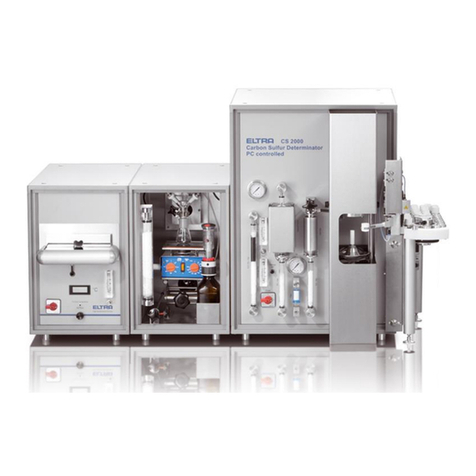
ELTRA
ELTRA CS-2000 User manual
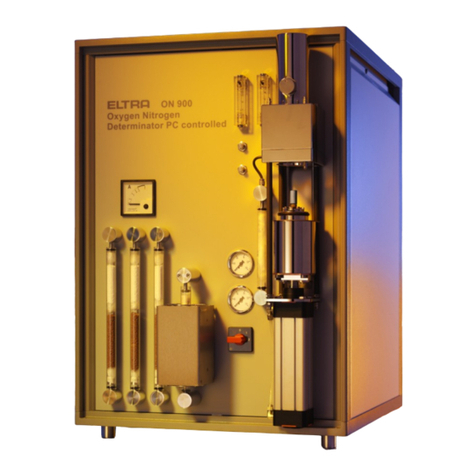
ELTRA
ELTRA ON-900 User manual
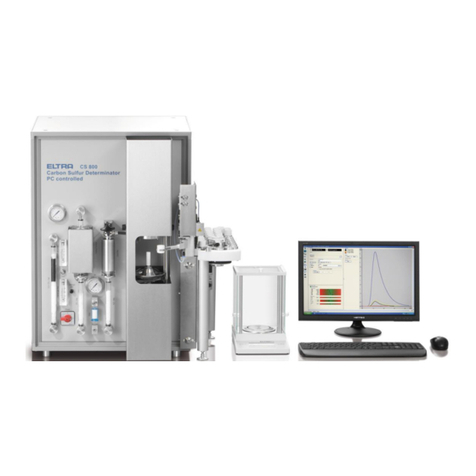
ELTRA
ELTRA CS-800 User manual
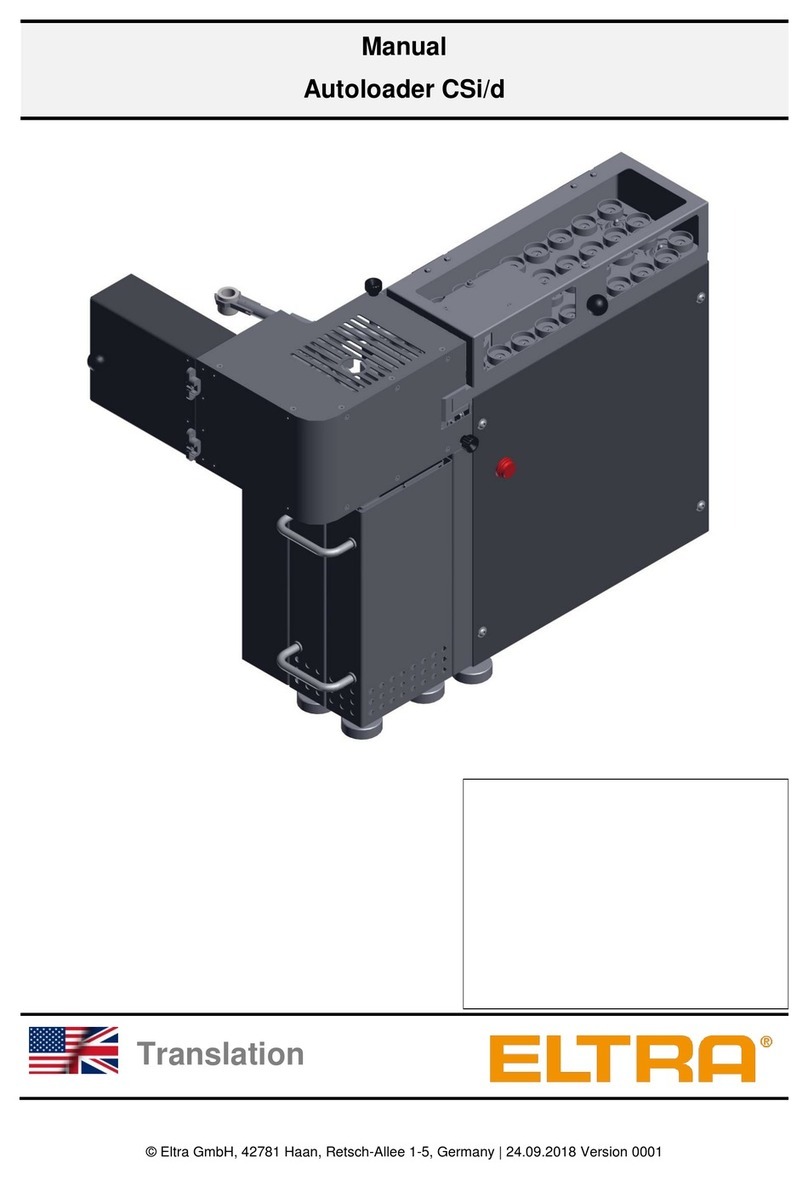
ELTRA
ELTRA CSi/d User manual

ELTRA
ELTRA CS-800 User manual
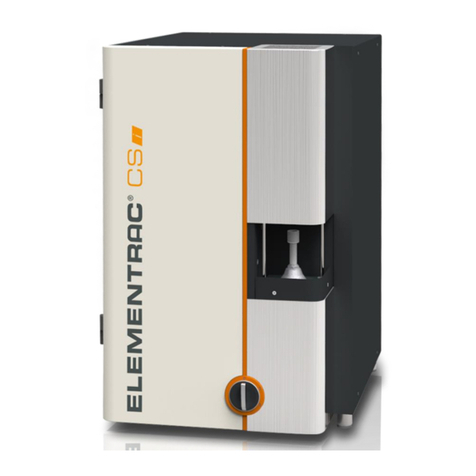
ELTRA
ELTRA ELEMENTRAC CS-i User manual

ELTRA
ELTRA CS-2000 User manual

ELTRA
ELTRA CS-580A User manual
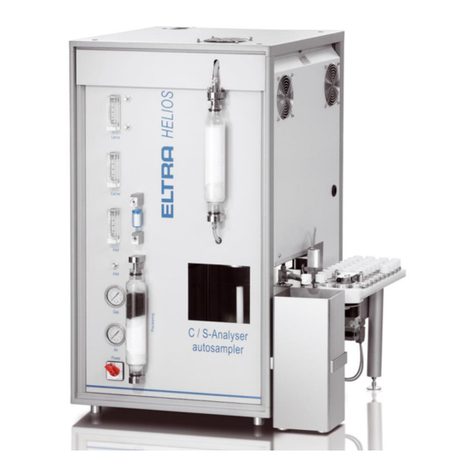
ELTRA
ELTRA CS-580A User manual

ELTRA
ELTRA ON-900 User manual
Popular Measuring Instrument manuals by other brands
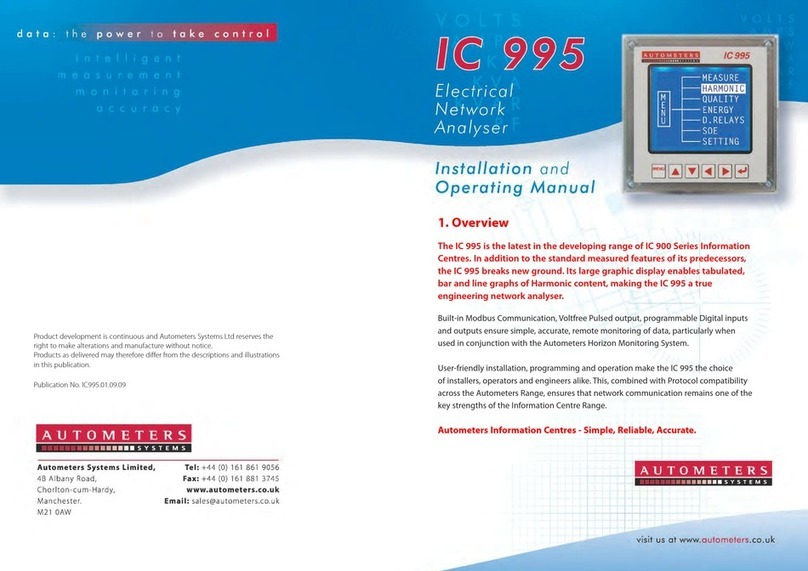
Autometers Systems
Autometers Systems IC 995 Installation and operating manual

Sokkia
Sokkia 130R Series Operator's manual
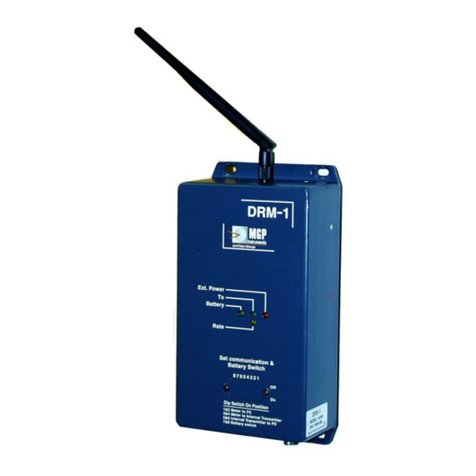
MGP Instruments
MGP Instruments DRM-1 OPERATION & CALIBRATION MANUAL
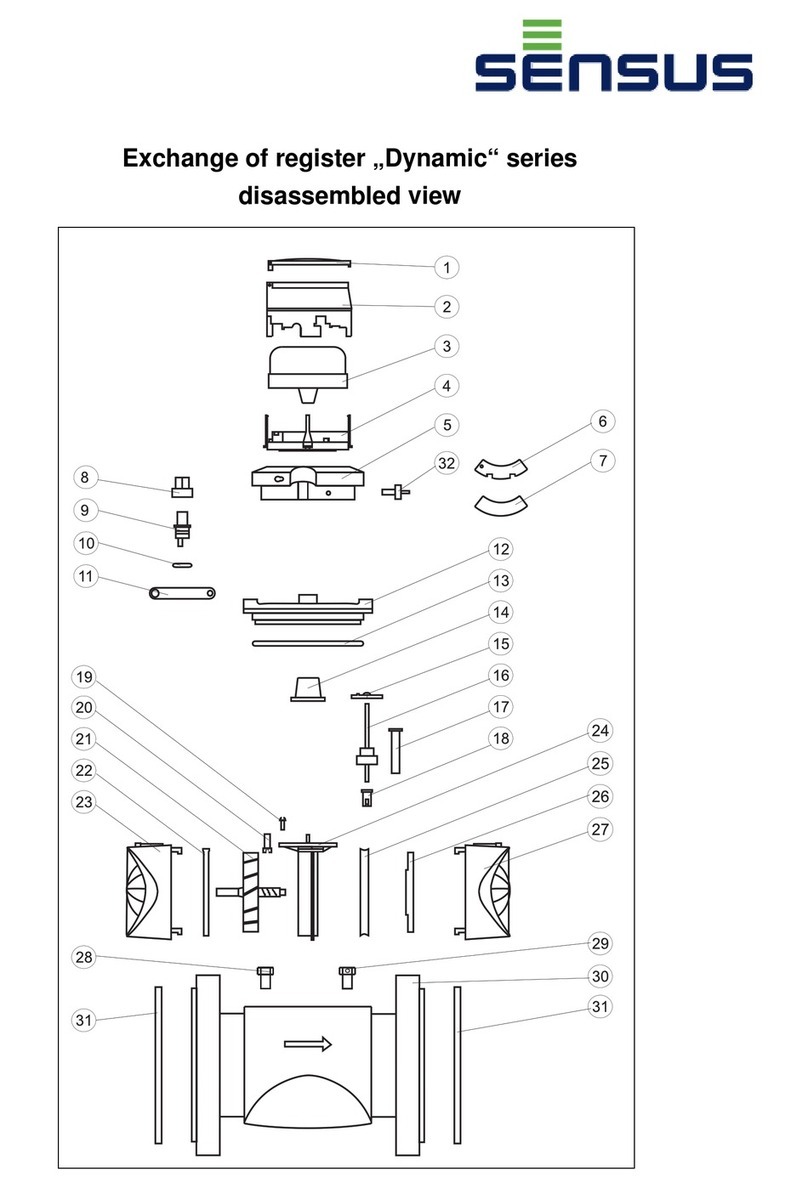
Sensus
Sensus Dynamic Series quick start guide

Atal
Atal ATD-06 instruction manual

Siemens
Siemens SITRANS MAG 5100W instructions
